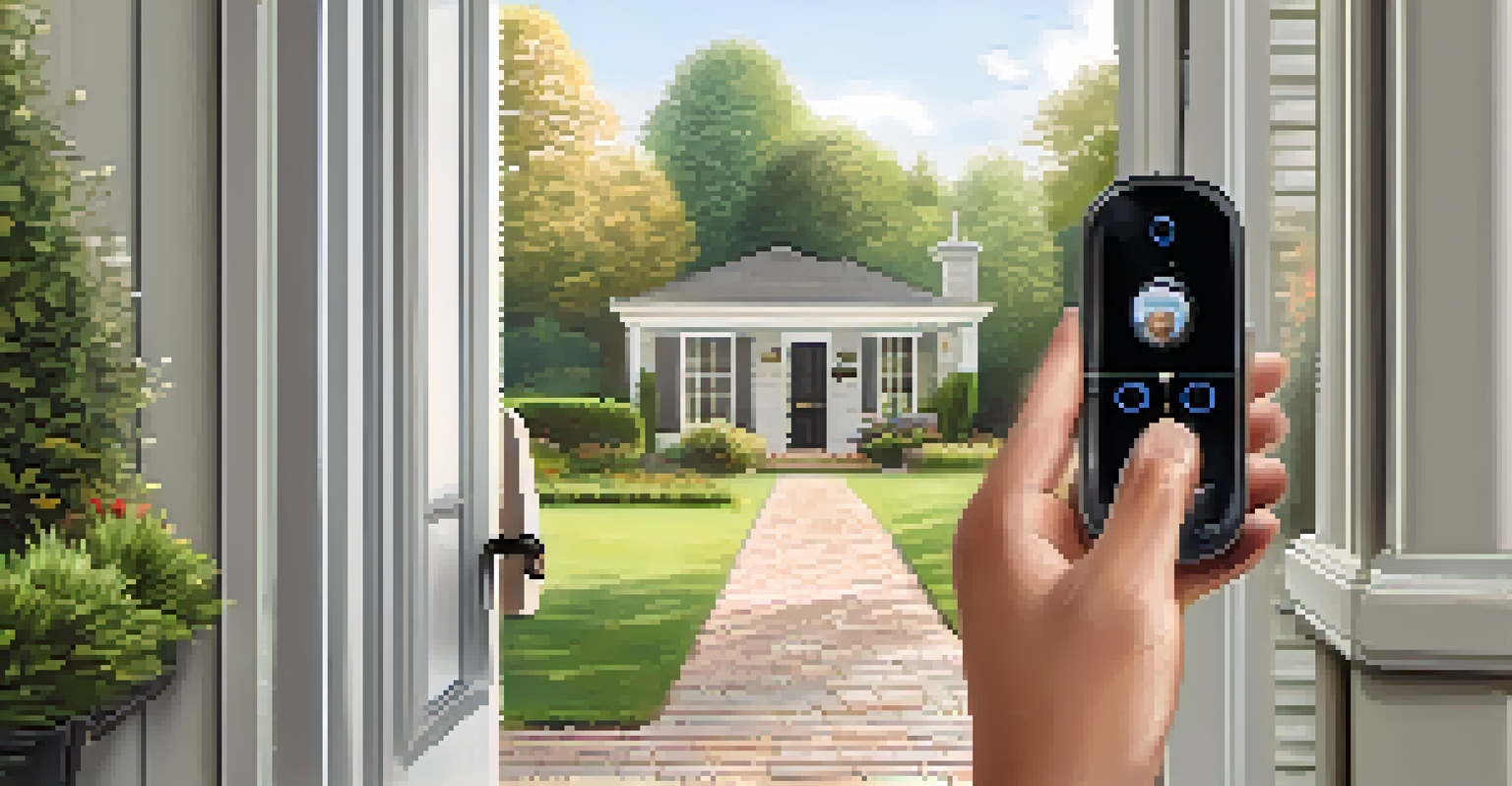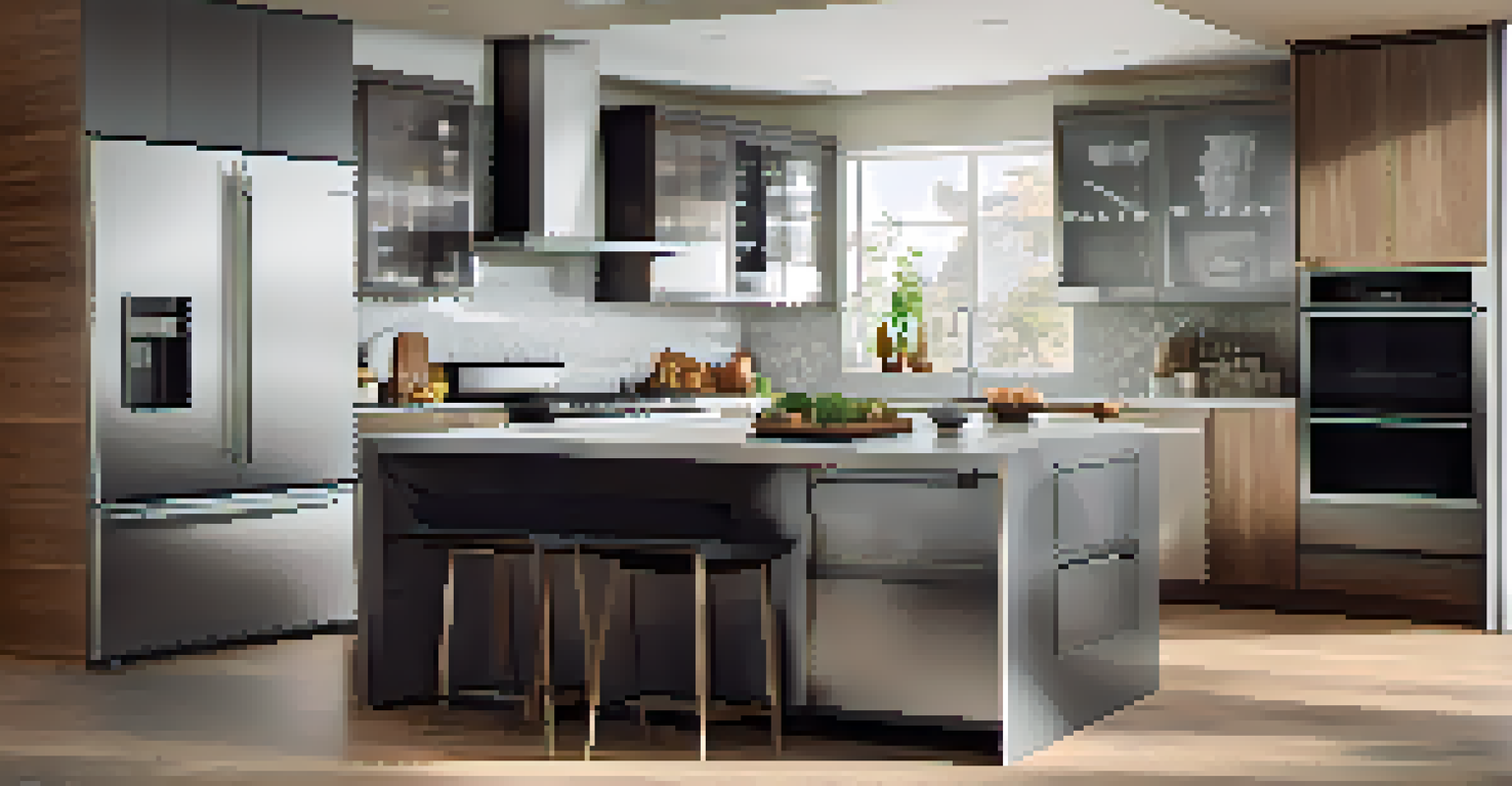Using Smart Devices to Enhance Home Accessibility

Understanding Home Accessibility Needs
Home accessibility is about making living spaces comfortable and navigable for everyone, especially those with disabilities. This involves considering various needs, from mobility issues to sensory impairments. By understanding these needs, we can better choose smart devices that will truly make a difference in daily life.
Accessibility allows us to unlock the door to a world of opportunities for those who may have felt excluded.
For instance, consider a person who uses a wheelchair. They may need wider doorways and voice-activated devices to control lights without needing to physically reach for switches. By identifying these specific requirements, we can ensure that technology serves as a helpful ally rather than a hindrance.
Ultimately, recognizing the diverse needs of individuals allows us to tailor our smart home solutions effectively. This understanding lays the groundwork for implementing technology that enhances independence and comfort.
Voice Assistants: Your Personal Helper at Home
Voice assistants like Amazon Alexa or Google Assistant are excellent tools for enhancing home accessibility. They enable users to control various devices hands-free, making it easier for individuals with mobility challenges to manage their environment. Imagine being able to turn on the lights or adjust the thermostat just by speaking.

These assistants can also help with reminders, making them invaluable for seniors or those managing health conditions. For example, setting a reminder to take medication can be done effortlessly, which adds a layer of safety and independence to daily routines.
Enhancing Accessibility with Tech
Smart home devices can significantly improve daily living for individuals with disabilities by addressing their unique accessibility needs.
Moreover, voice assistants can integrate with other smart devices, creating a seamless and connected home experience. This interconnectedness is key to fostering a more accessible living space.
Smart Lighting: Brightening Up Accessibility
Smart lighting systems adjust brightness and color based on the time of day or personal preferences. For individuals with visual impairments, these systems can enhance visibility, reducing the risk of accidents in the home. Imagine a hallway that automatically brightens as you approach, guiding you safely.
Technology is best when it brings people together.
Additionally, smart lights can be controlled via apps or voice commands, eliminating the need to fumble for switches in the dark. This feature can be especially beneficial for individuals with limited mobility or dexterity, as it simplifies their interactions with lighting.
The ability to customize lighting also contributes to a more comfortable environment. Users can set relaxing colors for downtime or brighter settings for tasks, allowing them to create spaces that cater to their unique needs.
Smart Doorbells: Enhancing Security and Convenience
Smart doorbells, like Ring or Nest, provide a level of security and convenience that is hard to beat. These devices allow users to see and communicate with visitors without needing to physically approach the door. This feature is particularly valuable for individuals with mobility issues or those who feel vulnerable when answering the door.
With real-time video feeds and two-way audio, users can screen visitors from anywhere in the house. This means no more rushing to the door or risking safety – simply check the video feed and respond accordingly. It's like having a virtual security guard right at your doorstep.
Voice Assistants for Independence
Voice assistants facilitate hands-free control of home devices, empowering users with mobility challenges to manage their environment easily.
Furthermore, many smart doorbells send notifications directly to smartphones, keeping users informed even when they are not home. This added layer of control enhances peace of mind and independence.
Smart Thermostats: Comfort at Your Fingertips
Smart thermostats like Nest or Ecobee allow for effortless temperature control, which can be a game-changer for accessibility. Users can set their ideal climate remotely via smartphone apps, ensuring comfort without needing to navigate to the thermostat. This is particularly beneficial for those with mobility challenges or disabilities.
Additionally, smart thermostats learn your habits over time, optimizing energy use while keeping your home comfortable. For example, if you frequently adjust the temperature in the evenings, the device will eventually do this automatically. This feature not only enhances comfort but also promotes energy efficiency.
These devices can also integrate with voice assistants, allowing for voice-activated temperature adjustments. This seamless interaction further enhances accessibility in the home.
The Role of Smart Appliances in Daily Life
Smart appliances, such as refrigerators, ovens, and washing machines, have transformed how we approach daily chores. Many of these devices can be controlled remotely, allowing users to start or stop activities from anywhere in the house. For those with mobility challenges, this means less strain and more convenience.
Consider a smart oven that can be preheated remotely. This feature enables users to prepare meals without the hassle of getting to the appliance. It’s a small change that can make a significant difference in daily cooking routines.
Safety Features for Peace of Mind
Smart safety devices enhance home security and alert users to dangers, providing critical support for those with mobility issues.
Smart appliances can also provide alerts for maintenance issues. For instance, if a washing machine detects a problem, it can send a notification to your smartphone, allowing for timely intervention. This proactive approach helps maintain independence and reduces the need for constant supervision.
Safety Features: Ensuring Peace of Mind
Safety is a top priority in any home, and smart devices are stepping up to the challenge. From smoke detectors that send alerts to your phone to smart locks that offer remote access, these technologies enhance security effortlessly. For individuals with mobility issues, such features can be life-saving.
For instance, smart smoke detectors can alert users to danger even when they are in another room or outside. This means that individuals who may not hear a traditional alarm can still be informed and take action immediately.

Similarly, smart locks provide the ability to grant access to caregivers or family members without needing to physically handle keys. This adds an extra layer of security and convenience, allowing those in need of assistance to feel more secure in their homes.
Creating a Fully Accessible Smart Home
Designing a fully accessible smart home involves careful planning and consideration of individual needs. Start by assessing the specific challenges faced by residents and selecting devices that address these issues. This personalized approach ensures that technology serves as a supportive tool rather than a complication.
Consider the layout of your home and how smart devices can enhance navigation and comfort. For example, motion-sensor lights can illuminate pathways, while voice-activated devices can control entertainment systems, making home life smoother and more enjoyable.
Ultimately, the goal is to create a home that promotes independence, safety, and comfort for everyone. By thoughtfully integrating smart devices, we can build environments that truly cater to the diverse needs of all residents, making every home a welcoming space.